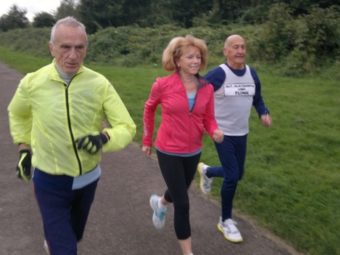When you decide to go for a run, do you plan exactly what you plan to do on the run? For example, this run will be a tempo or a long, slow, distance run. Does all of your plan include time, distance goals and nothing else? If it does you could be leaving some things on the table.
Most training plans available do not offer enough for the runner but ChiRunning training plans follow the fundamental belief that technique matters and efficiency can improve with mindful practice. For example, learning how good posture combined with moving from one’s center can make most injuries a thing of the past, is one of the first things a ChiRunning workshop introduces to the students. Ask the average runner what good running technique looks like and most might reply they are not quite sure or respond with the current famous running phenomenon name. The average runner when asked what they concentrate on during their run might respond with “the music they are listening to”.
If improving your personal best is your goal, what steps are you putting together to ensure you meet this goal. Is it run faster and go longer using more muscle strength? What could go wrong with this plan! Pushing yourself too hard and ending up with an injury only results in having to sit it out for a while.
So if you ever get the chance to look over the training plans that ChiRunning offers you will notice several differences from the average plan. First, you do not run for distance but time instead. One of reasons behind this is too ensure that you’re not pushing too hard. The plans add focuses for the student to work on based on the goal of improving their running form. The objective is to connect the runner’s mind with what the body is doing and carry on a conversation the entire run. Eventually, this conversation will always be playing in the background and the runner learns to make adjustments searching for the least amount of work going on in the legs as gravity works to propel them forward. The plans are normally broken down into phases; the first always addressing body posture and form. The second phase begins increasing distance and efficiency of movement. The final phase encompasses specific race conditions and speed work through proper form focuses. At no point during the training plans are the clients encouraged to push past their limitations; In fact, they are encouraged to continually “body sense”. “Body sensing” allows the runner to make adjustments based on feedback from their body so that niggles do not become an injury. We always encourage our clients to review what their runs taught them after they run. The things you learn from the focuses then might occur to you during a challenging portion of a race.
The mindful practice that ChiRunning offers runners is a way to continually improve their form while working towards an achievement. Considering your running to be a practice allows you the ability of always improving your running technique while saying goodbye to injuries related to poor form. Another advantage is learning how to move from your center, taking the work out of running and make your running more efficient. Make sure your plan isn’t one that is only half done and addresses technique and form.




